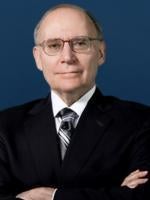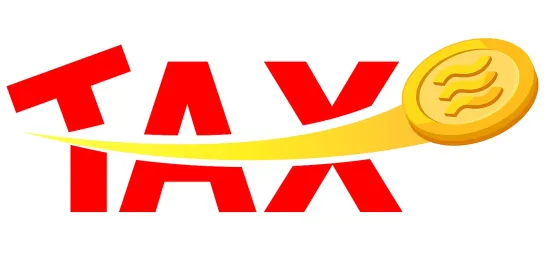If a taxpayer calculates research tax credits using an appropriate statistical sampling method on its tax return, does the taxpayer then make a prima facie case in the Tax Court by introducing evidence of that statistical sampling method?
In Phoenix Design, Inc. v. Commissioner,[1] the court answered the question in the negative, denying the taxpayer’s request that discovery and trial be limited to a subset of three to six projects selected from the twenty projects the petitioner deemed qualified for the research credit:
"[W]e have previously held that limiting the scope to a sample of research projects is improper because doing so would relieve a taxpayer of his burden of proving entitlement to the research credits."
The court cited two cases for the proposition that if the parties do not stipulate to a method to sample the population of all research projects, then as a matter of law, evidence of a sampling methodology is inadmissible. In the first case, Betz v. Commissioner,[2] statistical sampling was not involved, so the case is arguably irrelevant. The second case, Bayer Corp. v. United States,[3] is more on point. The court refused to impose a sampling plan on the Commissioner of Internal Revenue when the taxpayer could not identify all the research projects in the population for which the taxpayer claimed research credits. If, however, the taxpayer can identify all the projects for which it might have performed qualified research, as may be the case in Phoenix Design, the Bayer case also might be off base.
Facts: In Phoenix Design, the taxpayer engaged in the business of designing mechanical, electrical, plumbing, and fire protection systems. The taxpayer hired a consultant to calculate the federal income tax credits attributable to the taxpayer’s research activities. Using a statistical methodology, the consultant made the following determinations:
- During the tax years in issue, the taxpayer conducted 238 projects for which tax-credit qualified activities might have been performed. The 238 projects constitute the 'population' that was to be statistically sampled.
- The consultant selected a sample of twenty-four projects for study and determined that twenty of the sampled projects had credit-eligible research activities. The sample projects presumably were selected randomly. There is no assertion otherwise.
-
The consultant then extrapolated the result of the study of the sample projects to the 238 projects in the population to calculate the amount of research credits to which the taxpayer was entitled. The taxpayer claimed the total amount of these credits, $461,741.00 in its tax returns.
Upon audit, the Commissioner disallowed the credits and imposed penalties. The taxpayer then petitioned the Tax Court for a redetermination of the Commissioner’s action. The issue is whether the taxpayer engaged in research activities that qualified for the credits.[4]
Discovery: During informal discovery, the taxpayer provided information relating to the projects that were sampled and an explanation of the sampling methodology. The Commissioner asked the taxpayer to produce details for all the 238 projects.[5] The taxpayer responded with a motion to limit discovery to only three to six projects in the qualifying sample, reasoning that under Tax Court Rule 70(b)(1), discovery must be proportional to the needs of the case.[6] The taxpayer argued that with less than $500,000 in credits in issue, providing details about 238 projects was unreasonable. During informal discovery, the taxpayer limited the Commissioner’s access only to information in the qualifying sample.
Court Order: The court denied the taxpayer’s motion but admonished the Commissioner to cooperate in efforts to streamline the case to preserve the resources of the court and the parties.[7] The opinion recounted prior cases in which taxpayers and the Commissioner were able to agree to a representative sample and to a projection of the court’s findings concerning the sample to the entire population.
The court stated, however, that the taxpayer’s proposal to limit discovery to three to six projects in the sample might not accurately reflect the taxpayer’s activities during the taxable years. The opinion also included perhaps a veiled threat that the court would impose a sampling methodology if the parties could not agree. Not surprisingly, the parties soon filed a stipulation agreeing to a trial of four projects, for which the taxpayer would provide discovery.[8] The case will be tried later this year.
Comment: The Commissioner appears unalterably opposed to a taxpayer’s reliance on statistical sampling to identify research projects that qualify for the credit.[9] But where the taxpayer’s records are complete – recognizing that completeness may mean different things to different people – and where the sampling methodology is used contemporaneously with the preparation of the tax return, the taxpayer may have a persuasive argument that its sampling documentation is admissible and carries its evidentiary burden in a proceeding to defend against a challenge by the Commissioner.
Federal Rule of Evidence 702 authorizes use of expert testimony, which can include statistical sampling.[10] The Tax Court rules of evidence follow the federal rules.[11] Moreover, Treasury regulations authorize the use of statistical sampling in specific circumstances to calculate items that are recorded in tax returns.[12] These authorities arguably extend to a taxpayer’s use of statistical sampling to determine the amount of research credits for tax return purposes. If a taxpayer can identify its population of research projects, the projects should be amenable to statistical sampling. It seems inappropriate to reject statistical sampling on the ground that it relieves the taxpayer of its burden to prove entitlement to the credits. The very purpose of permitting statistical sampling is to relieve the taxpayer of an evidentiary burden that otherwise would be impossible to carry. Undoubtedly, each case will present its own unique issues, but a blanket statement that precludes a taxpayer’s reliance on sampling to make its case seems extreme.
Please contact the authors of is alert or your Miller Canfield attorney to discuss this issue further.
[1] U.S. Tax Court Docket No. 4759-22 (petition filed Mar. 14, 2022).
[2] T.C. Memo. 2023-84.
[3] 850 F.Supp.2d 522 (W.D. Pa. 2012).
[4] Research is qualified if the taxpayer is uncertain about the product design and uses a hard science to conduct a process of experimentation to develop or improve the product function, performance, reliability, or quality. IRC §41(d).
[5] The “details” relate to factors in IRC S41(d). See n.4, supra.
[6] Tax Court Rule 70(b)(1) is the counterpart of Federal Rule of Civil Procedure 26(b)(1).
[7] Docket Entry No. 42 (Aug. 29, 2023).
[8] Docket Entry No.54 (Sept. 19, 2023).
[9] The Commissioner appears to agree that the quantitative measure of the credits – wages, contract expense, and supplies – may be estimated but does not agree that a method of estimation may be used to determine if the research activities, themselves, are qualified.
[10] See, e.g., Daubert v. Merrell Dow Pharmaceuticals, Inc., 509 U.S. 579 (1993); Laber v. Austin, 643 F. Supp.3d 1242 (D. Kan. 2022).
[11] IRC §7453, T.C. Rule 143.
[12] Treas. Reg. §§ 1.263A-1(f)(3)(i)(B)(2) (inventory burden rate); 1.471-8(b)(3)(iii) (retail lower of cost or market method) 1.168(i)-8(g)(2)(iii) (disposition of asset in a mass asset account).





 />i
/>i

